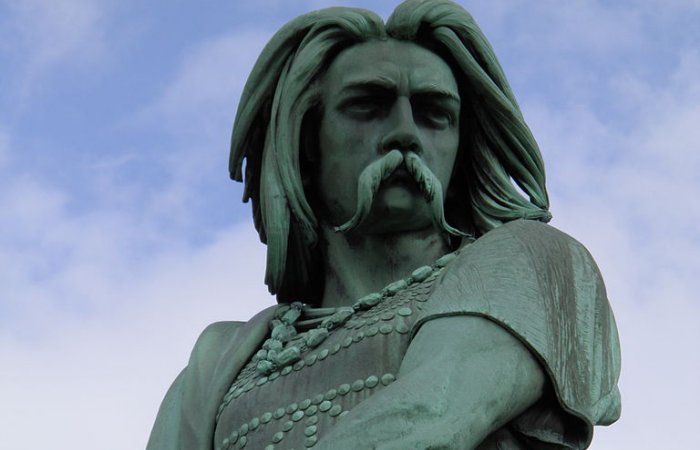Vercingetorix: Greatest Of All Gallic Leaders And Hero Of The French People
A. Sutherland - AncientPages.com - Vercingetorix was among the best-known and greatest Gallic leaders. He was a militant leader who courageously challenged Julius Caesar. He lost his battle but retained the honor by giving his own freedom and life in exchange for saving his people.
He was strangled on Sep 26, 46 BC.
Who was Vercingetorix?
Statue of Vercingetorix, Alesia. Credit: Carole Raddato - CC BY-SA 2.0
He belonged to the Arverni people, one of the most powerful Celtic tribes in ancient Gaul. The Arverni had their massive stronghold Gergovia in south-central France.
The Arverni made Vercingetorix their king, and even the chieftains of a confederation of Gallic tribes supported him as commander-in-chief. He was a charismatic and respected leader, but he was not the commander of a unified force.
Vercingetorix was a young nobleman whose father was killed while attempting to become king. He could not rely on his family; his uncle and the rest of the nobles believed that opposing Julius Caesar was a too great risk.
In his fight against the common enemy, Rome, Vercingetorix had become a seasoned warrior; he gathered an army of poor men, made alliances with other tribes, and took the mountain stronghold of Gergovia (52 BC) in a battle in which several thousands of Romans and allies died, and Caesar's Roman legions withdrew.
For now, Vercingetorix was welcomed there as the king.
Troublesome Gaul (modern France and Belgium)
The conquest of Gaul (France) lasted about a decade: the Romans entered the Alps in 58 BC.
Vercingetorix throws down his arms at the feet of Julius Caesar. Siege of Alesia painting by Lionel Royer (1852–1926). Credit: Public Domain
The Gauls did not form a single state but consisted of many states of different ethnic origins.
In the late Iron Age, their different cultures (called Celts or Gauls by the Greeks and Romans) had started to resemble each other, largely due to trade and exchange. They were also feared by neighbors because of their systematic invasions.
While Caesar conquered one tribe, the other was about to rebel, and among the Gauls, he had the greatest enemy -Vercingetorix, who learned the tactics and strategy of the Romans.
Perhaps he secretly dreamed of achieving something similar to what his father, unfortunately, could not.
He was disappointed; he wanted to help his people who faced brutal treatment from Caesar’s soldiers running around in Gaul, attacking tribe after tribe after tribe for more than five years. It is believed that about a million people perished during these activities.
Small victories only and finally fatal strategic error
Vercingetorix knew about the difficult political situation of Caesar: triumvirate was falling apart - Crassus was killed in the sands of the Middle East against the Parthians, and Pompey was more and more influential in Italy.
It was the best time to start the uprising. Vercingetorix gathered a large, highly mobile army. In fact, in the beginning, he pressed the attack repeatedly and achieved small victories, forcing Caesar's army to withdraw to the south.
Statue of Vercingetorix by Frédéric Bartholdi, on Place de Jaude, in Clermont-Ferrand, France. Image via wikipedia
Vercingetorix’s strategy appeared to be working, but then the turning point was the Battle of the Saône. At that point, Vercingetorix was forced to retreat because he had difficulties feeding his men. He decided to head north to his main supply base at Alesia (modern-day Alise-Sainte-Reine in eastern France) to regroup, refit, and resupply.
Suddenly, he learned that Caesar decided to pursue him instead of returning to Rome. Vercingetorix’s decision to retreat to Alesia - whatever the reason for it he had – it would prove to be a fatal strategic error. Instead of confrontation in a battle, Caesar began the Siege of Alesia.
Finally, food stores were almost running out inside Alesia, and real suffering began. The Gauls began to pursue acts of cannibalism and fell all hope of victory. Apparently, Vercingetorix's attempt to unite the Gauls against Roman tyranny and win the battle came too late.
Christopher Lambert as Vercingetorix in the movie Druids. Credit: IMDb
Vercingetorix decided to surrender to Caesar immediately and pay tribute to Caesar by offering himself for sparing his people. His captors did not treat him in the way his bravery deserved. He was taken into prison in Roma for six years. In 46 BC, Vercingetorix—a proud and very courageous warrior—was executed (probably strangled). Unfortunately, he died not like a warrior in a battle.
Many monuments of Vercingetorix were erected in France during the 19th century; he is alive in the memory of the French people.
Written by – A. Sutherland AncientPages.com Staff Writer
Updated on April 4, 2024
Copyright © AncientPages.com All rights reserved. This material may not be published, broadcast, rewritten or redistributed in whole or part without the express written permission of AncientPages.com
Expand for referencesMore From Ancient Pages
-
 Wari Culture: Ancient Astronomical Observatory Excavated In Cusco, Peru
Archaeology | Dec 20, 2017
Wari Culture: Ancient Astronomical Observatory Excavated In Cusco, Peru
Archaeology | Dec 20, 2017 -
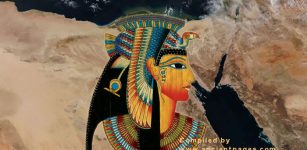 Effects Of The Volcanic Eruption In Alaska Rippled Through Ancient Egypt During Cleopatra’s Reign
Archaeology | Jul 26, 2022
Effects Of The Volcanic Eruption In Alaska Rippled Through Ancient Egypt During Cleopatra’s Reign
Archaeology | Jul 26, 2022 -
 Beginning Of Fashion – Paleolithic Eyed Needles And Evolution Of Dress
Archaeology | Jun 29, 2024
Beginning Of Fashion – Paleolithic Eyed Needles And Evolution Of Dress
Archaeology | Jun 29, 2024 -
 Anasazi: Sophisticated Civilization That Disappeared Or Evolved Into American Indians Of Southwest
Civilizations | Dec 3, 2016
Anasazi: Sophisticated Civilization That Disappeared Or Evolved Into American Indians Of Southwest
Civilizations | Dec 3, 2016 -
 Roman-Byzantine Grave Unearthed In Turkey
Archaeology | Jan 28, 2016
Roman-Byzantine Grave Unearthed In Turkey
Archaeology | Jan 28, 2016 -
 Unique Ancient Figurine Puzzles Scientists – Was She An Unknown Pre-Historic Water Goddess?
Archaeology | Jul 21, 2022
Unique Ancient Figurine Puzzles Scientists – Was She An Unknown Pre-Historic Water Goddess?
Archaeology | Jul 21, 2022 -
 1,500-Year-Old Tunnel Tomb With Human Remains And Artifacts Accidentally Unearthed In Japan
Archaeology | Feb 23, 2018
1,500-Year-Old Tunnel Tomb With Human Remains And Artifacts Accidentally Unearthed In Japan
Archaeology | Feb 23, 2018 -
 Leopards In Italy? Oh My! New Findings Show That The Landscape Of Italy Was Once A Very Different Place
Featured Stories | Mar 20, 2017
Leopards In Italy? Oh My! New Findings Show That The Landscape Of Italy Was Once A Very Different Place
Featured Stories | Mar 20, 2017 -
 Anansi The Spider: Trickster And Spirit Of Knowledge In African Mythology
African Mythology | Jul 20, 2016
Anansi The Spider: Trickster And Spirit Of Knowledge In African Mythology
African Mythology | Jul 20, 2016 -
 Parthians: Their Great Empire And Skilled Horse Archers
Civilizations | Nov 10, 2016
Parthians: Their Great Empire And Skilled Horse Archers
Civilizations | Nov 10, 2016 -
 Fossils, Fires And Focus On Early Human Activity In Southeast Asia Jungles
Archaeology | Oct 14, 2024
Fossils, Fires And Focus On Early Human Activity In Southeast Asia Jungles
Archaeology | Oct 14, 2024 -
 Magnificent 2,000-Year-Old Treasure Found In Wales Could Point To An Unknown Roman Settlement
Archaeology | May 12, 2023
Magnificent 2,000-Year-Old Treasure Found In Wales Could Point To An Unknown Roman Settlement
Archaeology | May 12, 2023 -
 Old Bone Links Lost American Parrot To Ancient Indigenous Bird Trade
Archaeology | Nov 8, 2022
Old Bone Links Lost American Parrot To Ancient Indigenous Bird Trade
Archaeology | Nov 8, 2022 -
 God Of The Gallows And How Odin Hanged Himself From Yggdrasil To Know Secrets Of Runes
Featured Stories | May 7, 2018
God Of The Gallows And How Odin Hanged Himself From Yggdrasil To Know Secrets Of Runes
Featured Stories | May 7, 2018 -
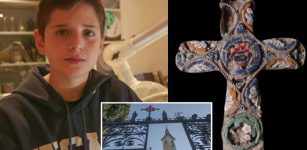 Young Boy Finds Unique Micro-Mosaic Cross Medallion In Jerusalem
Archaeology | Jan 3, 2025
Young Boy Finds Unique Micro-Mosaic Cross Medallion In Jerusalem
Archaeology | Jan 3, 2025 -
 İnkaya Cave Study Brings To Light 86,000-Year-Old Traces Of Human Life
Archaeology | Aug 22, 2023
İnkaya Cave Study Brings To Light 86,000-Year-Old Traces Of Human Life
Archaeology | Aug 22, 2023 -
 Chinampas: Artificial Islands Created By The Aztecs To Improve Agriculture
Ancient History Facts | May 17, 2016
Chinampas: Artificial Islands Created By The Aztecs To Improve Agriculture
Ancient History Facts | May 17, 2016 -
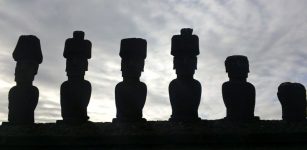 How Did The Early Rapa Nui People Put Huge Hats On Giant Statues Of Easter Island?
Ancient Technology | Jun 5, 2018
How Did The Early Rapa Nui People Put Huge Hats On Giant Statues Of Easter Island?
Ancient Technology | Jun 5, 2018 -
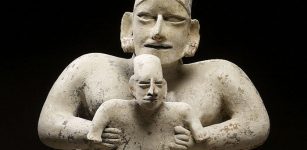 Ancient Mothers Cared For Kids Better Than Previously Thought
Archaeology | Nov 29, 2021
Ancient Mothers Cared For Kids Better Than Previously Thought
Archaeology | Nov 29, 2021 -
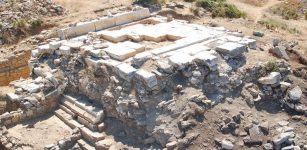 Excavations Begin In Ancient City Of Antiocheia Ad Cragnum, Turkey
Archaeology | Sep 4, 2015
Excavations Begin In Ancient City Of Antiocheia Ad Cragnum, Turkey
Archaeology | Sep 4, 2015

